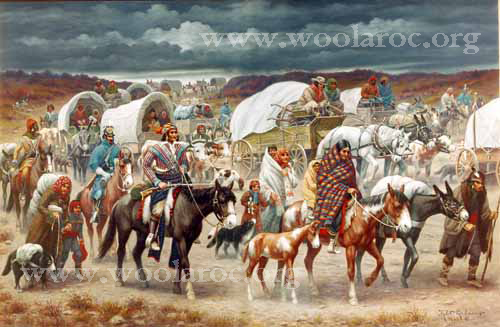The Museums listed below all own examples of Lindneux art. These museums provide unique and fun experiences for learning about history and art. Follow the links provided and consider planning a visit soon!
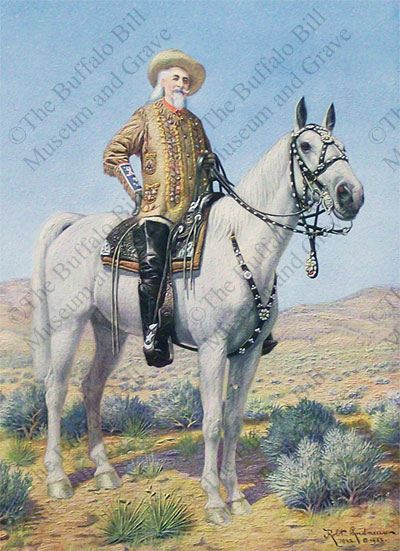
Buffalo Bill Museum and Grave
This iconic example of Lindneux art is found at the Buffalo Bill Museum and Grave on Lookout Mountain, Colorado. It is a life size portrait of Buffalo Bill On His Favorite Horse Isham. The painting is eight feet by ten feet in size and was completed in 1922. This image is used with permission from the Buffalo Bill Museum and Grave.
The description below was compiled from various documents in Lindneux’s files:
In this portrayal Cody is wearing the famous costume and seated in the silver mounted saddle in which thousands of people throughout the world have seen him. The famous shell bridle was presented to Cody by the Prince of Wales, (afterwards King Edward the 7th.) Cody’s outfit including the saddle and bridle are all on display at the Buffalo Bill Museum and Grave. The landscape in this painting is west of Cody, Wyoming, an area the Colonel always loved, especially at the end of spring when everything is green and bathed in sunshine.

This is a photo of Robert Lindneux at the Pahaska Tepee – Buffalo Bill Memorial Museum in 1923. Mr. and Mrs. Johnny Baker are seeing Lindneux off for a tour of the eastern states. The driver of the Dort Sport was Johnny Morgan.
Woolaroc Museum and Wildlife Preserve
One of Lindneux’s best known paintings is the Trail of Tears owned by the Woolaroc Museum and Wildlife Preserve located in Bartlesville, Oklahoma. The image shown is used with permission from the Woolaroc Museum.
The Woolaroc Museum has many other wonderful examples of Lindneux art including spectacular portraits of historical figures like Sequoyah, John Ross, Sitting Bull, American Horse, General George A. Custer, Christopher Columbus and many others. They also have some wonderful western life scenes by Lindneux such as Pioneers Defending a Wagon Train and Cattle Stampede.
Please contact the Woolaroc Museum to request permission to use the Trail of Tears image.
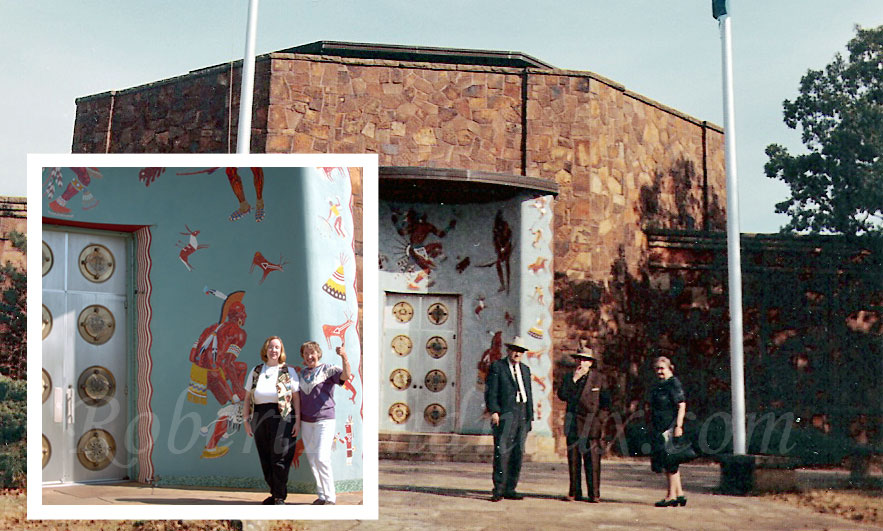
This is a photo of Robert and Gertrude Lindneux with Ben Bond in front of the Woolaroc Museum, in Bartlesville, Oklahoma in 1964.
Inset is a photo of Christina Smith and Jackie Millard 42 years later in front of Woolaroc Museum researching the life of Robert Lindneux.
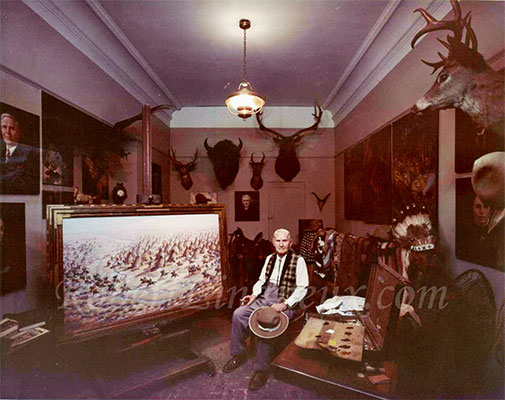
History Colorado Center
The History Colorado Center in Denver, Colorado, (formerly the Colorado Historical Society and now part of History Colorado) houses several of Lindneux’s significant historical works including Sand Creek Massacre, (shown in the front in the photo shown) Beecher Island, Thornburg Massacre, Camp Weld and Fort Lyon. They also have other distinctive examples including the allegory Death the Victor, and his only two “modern” works which are cubist style renditions of The Grand Canyon and Moose Lake.
This photograph shows Robert Lindneux and the collection of art and other memorabilia that he donated to the Colorado Historical Society late in his life.
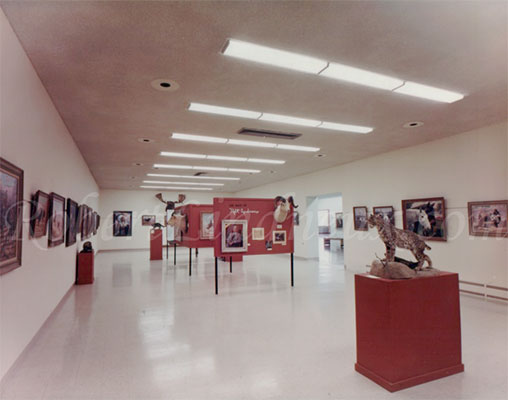
Gilcrease Museum
Lindneux had two exhibitions at the Gilcrease Museum in Tulsa Oklahoma, one in 1956, and the other in 1964. The Gilcrease collection of Lindneux works includes some of his most exceptional works in quality, color and subject. One of the better known works is a portrait of a Navajo chief called Shepherd of the Hills painted in 1928. Interestingly, Lindneux did two other versions of this work, a second but different portrait in 1930, and a third as part of his “Artist on Scene” series of Lindneux painting the impressive chief. This museum a must see stop for art lovers.
This is a photograph of one of the exhibitions, (1964 perhaps) that Robert Lindneux had at the Gilcrease Museum.
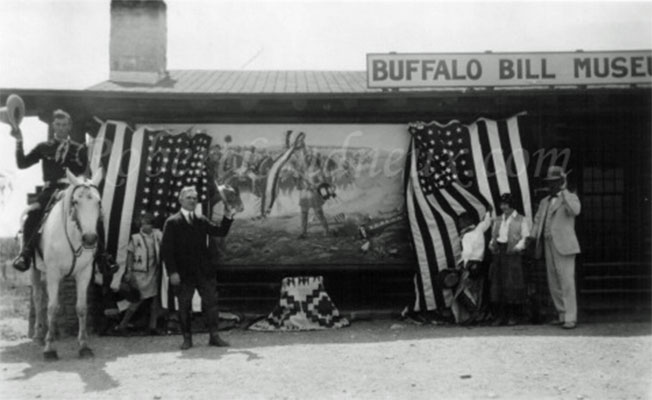
Buffalo Bill Center of the West
The Whitney Gallery of Western Art at the Buffalo Bill Center of the West in Cody, Wyoming houses the 6 foot by 14 foot First Scalp for Custer. The panting depicts the duel between Buffalo Bill and the Warrior Chief Yellow Hair which took place on Warbonnet Creek, South Dakota, on July 17, 1876. This is another must see location for anyone who wants to learn more about William F. Cody.
This is a photograph of the unveiling of Lindneux’s strongly criticized and debated depiction of the First Scalp for Custer at the Buffalo Bill Museum in Cody, Wyoming on July 27, 1928.

